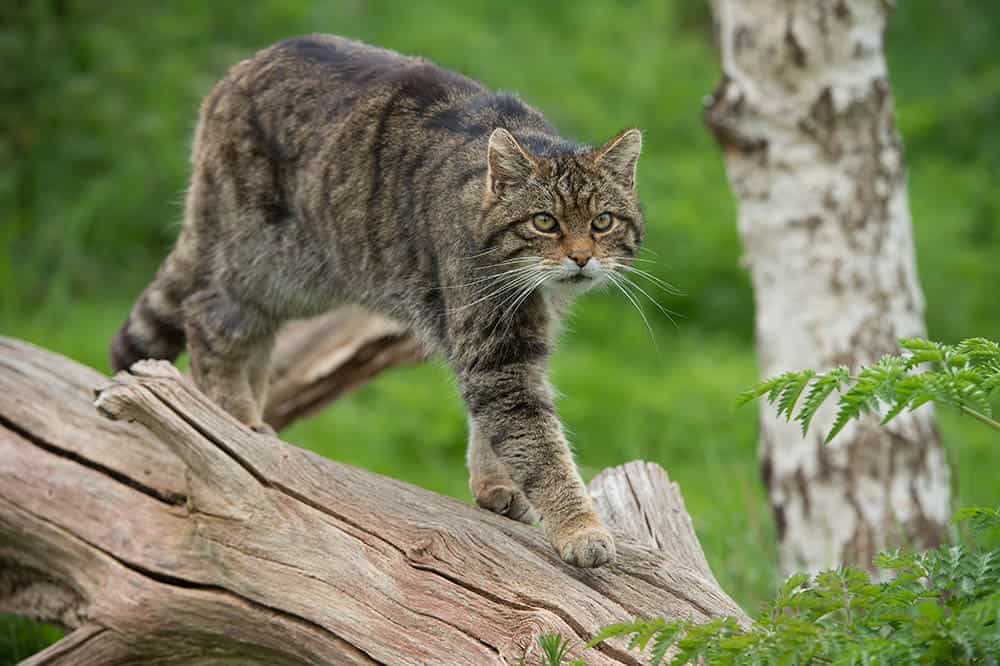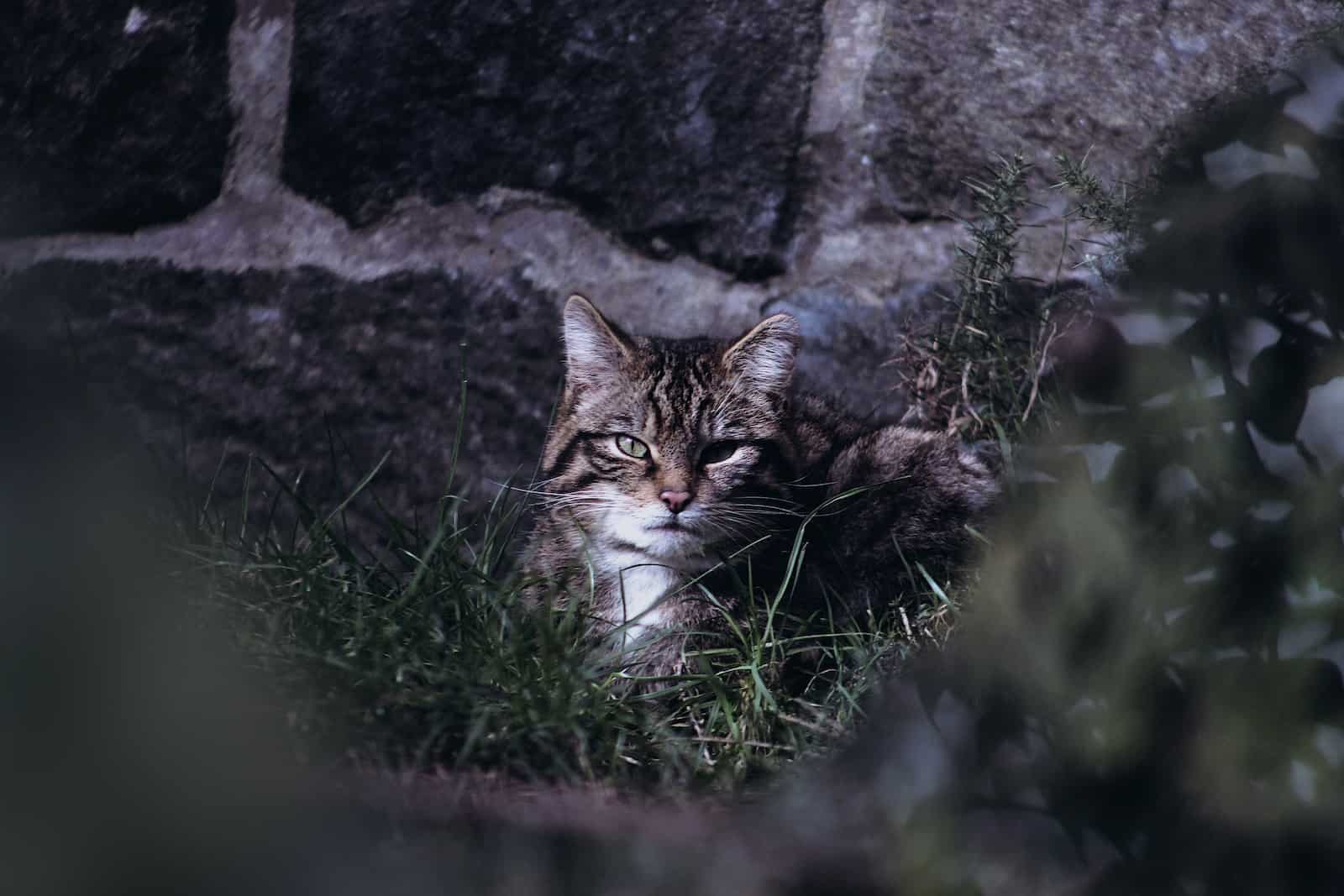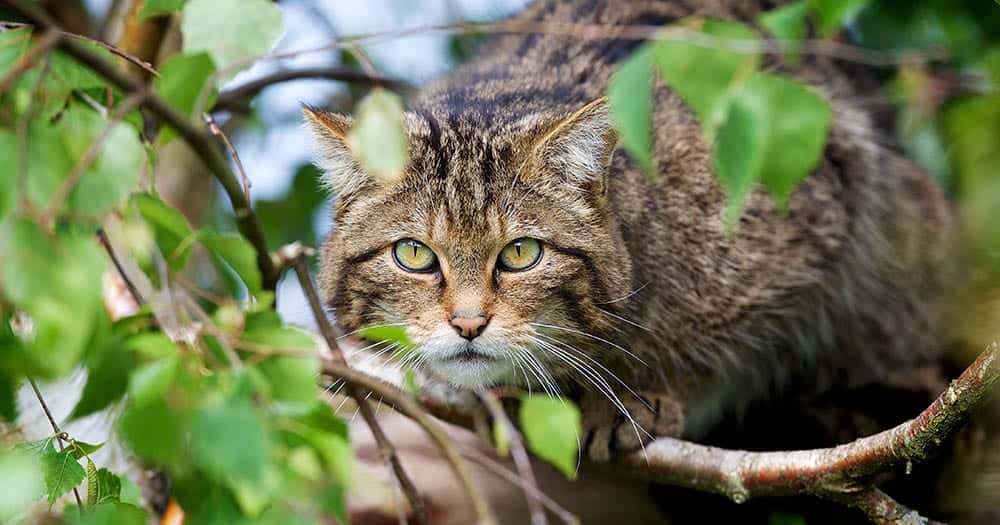Scotland is known for its wild scenery, gray skies, and mythological creatures. With a population of only around 5.51 million, Scotland is known for its rolling green hills. So, which animals can you find in these scenic green spots? There’s the Highland cow, golden eagle, puffin, and Scottish wildcats, for example.
The Highland tiger, which is also known as the Scottish wildcat (Felis silvestris), is the only native member of the cat family that can still be found in Britain in the wild. It’s considered “Critically Endangered,” with its numbers dwindling down to the hundreds, which is why you might not have known about there being any wildcats in Scotland at all. So, what do we know about the Scottish wildcat?

The Scottish Wildcat

| Size: | 22 to 25in |
| Weight: | 5-16lbs |
| Diet: | Rabbits, hares, birds, and small mammals |
The Scottish wildcat has similar markings to that of a domestic tabby, but you won’t make the mistake of mixing up the wildcat with a domestic cat. They are more muscular and stockier than the domestic cat, with longer legs and a larger, flatter head with ears that stick out to the side. Wildcats also don’t have white stomachs or feet or a line down their tails like you would see on a tabby cat.
Scottish wildcats live in the mountains and moorland and on the edge of woodlands. They are extremely rare and are not often seen, but the best chance to spot one is at dawn or dusk, when they are most active. They also avoid poor weather like snow or rain.

Why Have the Scottish Wildcat Numbers Dwindled?
Thanks to a combination of hunting and loss of habitat, the Scottish wildcat disappeared completely from England and Wales approximately 200 years ago.
Now the largest threat to the Scottish wildcat is hybridization, which is wildcats breeding with domestic cats. This dilutes the wildcat’s genes, and, as a result, the species’ distinctive features may one day be lost. Another added complication is that identifying wildcats is more difficult. It could be that the estimate of wildcat numbers reaching the hundreds is too high, and their actual number is around 35 or less.
Other threats to the wildcat include diseases spread by feral cats, road deaths, loss of habitat, and accidental killings in traps intended for other animals.
What is Being Done to Save the Scottish Wildcat?

Saving Wildcats (#SWAforLife) is a European partnership project that has put a conservation plan in place to protect the Scottish wildcat. They will establish a “breeding for release” center, which will bring experts together to develop the necessary skills wildcats need to thrive in the wild. Twenty wildcats will be released into the wild each year, with GPS collars to track and record their behavior and movement in an effort to increase the population.
The long-term plan will be to find safe spaces in Scotland and, eventually, across the United Kingdom. At first, however, the wildcats will be released within the Cairngorms National Park. Lastly, education and communication are vital to sustaining the Scottish wildcat’s existence. Perception needs to shift from thinking about wildcats as vermin to understanding how their presence can boost the economy through wildlife tourism.
Scottish Wildcats Are Part of Scottish Mythology
The Scottish wildcat is such an old part of Scottish history that it has links back to mythology. It’s believed that the folkloric creature Cat Sith is inspired by wildcats. Cat Sith is a fairy or witch disguised as a large cat prowling the Scottish Highlands.

Conclusion
There is only one type of wild cat in Scotland, and it’s at risk of becoming extinct. Thankfully, all is not lost. Efforts are being put in place to save the Scottish wildcat through education, threat removal, and tracking of the wildcat’s movements and behaviors. One day, we hope we’ll write an article on Scotland’s thriving, healthy Scottish wildcat population.
Featured Image Credit: Mark Bridger, Shutterstock
